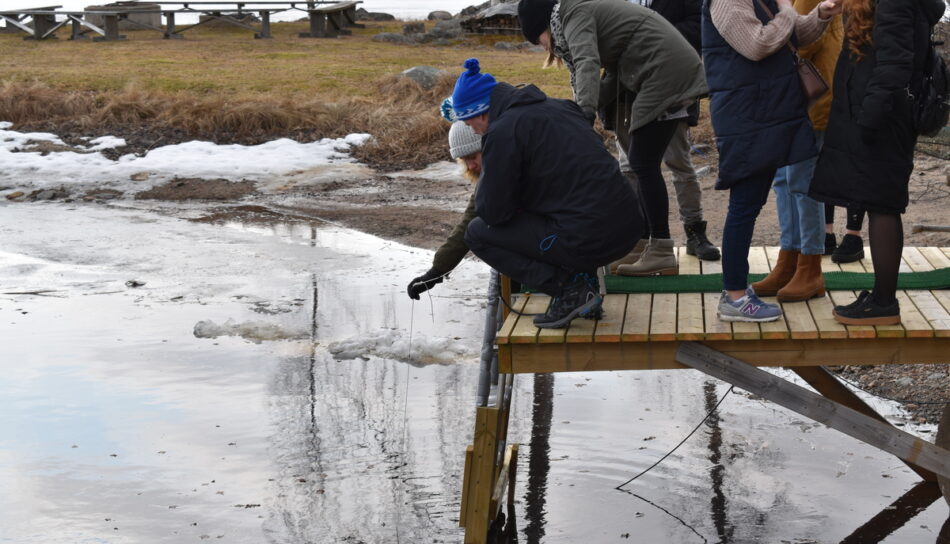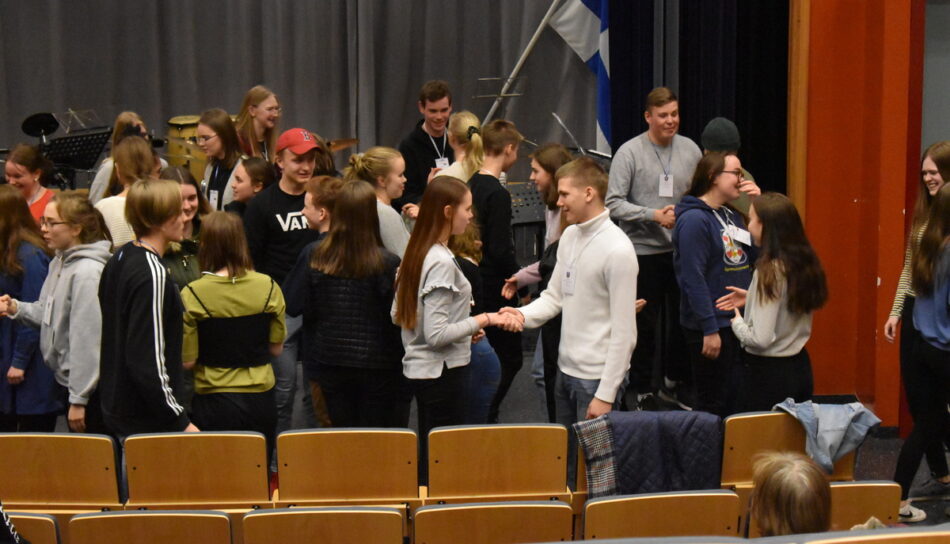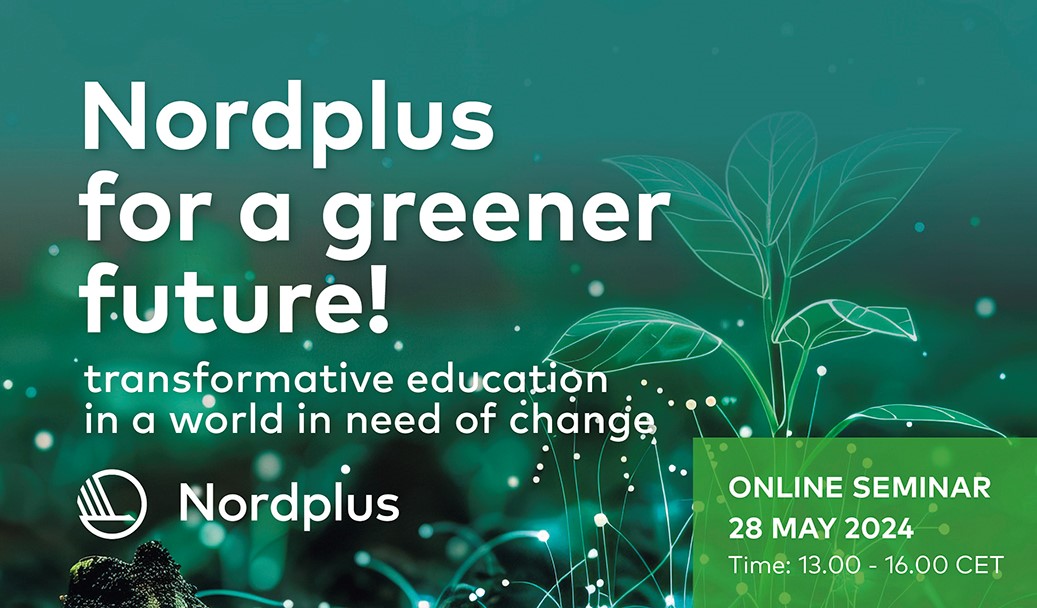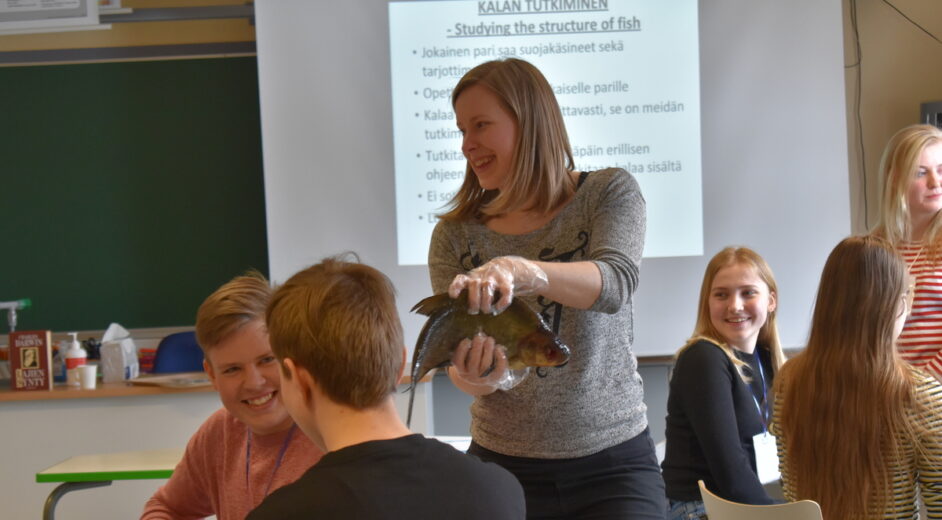Nordplus green transition project encouraged mobility and STEM education
The Baltic Sea was the physical setting for students discovering everything water can do - and everything we do with the sea, lakes, rivers and drinking water resources. From very different angles, they looked at opportunities and challenges and gained new knowledge in biology, physics, art and language.
Af Joan Rask, journalist
“Our chemistry and physics teachers were involved. Our biology teachers were involved. Everybody had their role. And the teachers even went out to collect water samples, to make sure it was done properly! And they carried out lab work with the students - I couldn't have done that!”
This is how Arja Andersson from Lappajärvi Upper Secondary School in Finland talks about the Nordplus project, in which she was the coordinator and an active participant. The project "From the Bottom to the Surface" ran over three years, and more than 110 school students and teachers from Finland, Estonia and Lithuania visited each other. In addition, the schools' other students and teachers were also partially involved, there were public exhibitions, a joint website and Facebook pages containing presentations.
Arja Andersson is an English teacher and, together with the school's management, she initiated the project. The background to this was a related project in the local area with Finnish pupils and a desire - for the first time – to try their hand at a Nordplus project.
"We were really thrilled to learn that Lithuania and Estonia would be participating. I organised quite a lot of activities here at our school, just as they did in their countries. It was good that we had three years and didn't have to do everything at the same time," she says.
Water as a theme
This project is rather special because so many students and teachers had the opportunity to visit their neighbouring countries, and because it highlighted a required common theme across all school subjects in natural sciences and humanities.

"The theme was easily integrated into different classes, like biology, history, chemistry and geography, of course, but also into art, literature and religion. In between visits, we studied the topic of water and, for example, in religion they examined the areas relating to water, for example, in ceremonies, and we created quite a lot of art, too. All the pupils took pictures of water in different seasons in different countries, and they brought the pictures with them for the exhibition in Finland," explains Arja Andersson.
Her own students wrote haiku poems in English, for example, with water as the theme. For the teachers who were not directly involved in the Nordplus project, it was also possible to work with the water theme and participate in some of the events together with the guests. They could choose for themselves whether they wanted to get actively involved. But for Arja Andersson there was no doubt about the importance of water as the overall theme.
"I think the use of water and taking care of our natural resources is one of the most important topics that students need to learn about. That is why we looked at water from very different angles and saw how water is purified and how water is a habitat for different types of fish. We went to some purification establishments and water bottling firms, and we saw how water is treated to make it drinkable," says Arja Andersson.
The Baltic Sea - a resource for life
Finland, Lithuania and Estonia all have borders along the Baltic Sea and all three countries have used the waterway actively and today have well-developed ports, industrial facilities and recreational spas, hotels and protected areas of natural interest along the coasts. For Anja Andersson, the shared geography added something extra.
"The Baltic Sea isn't clean, and we need to take care of the water! We need it for so many purposes. We are here in the north and then Lithuania is in the south and Estonia is in the middle. We visited the coast in all three countries and it was quite an amazing experience for me, because I saw how nature and the use of the coastline changed, depending on where we were,” says Anja Andersson.
Together with the other teachers and students, she visited areas of natural interest and businesses they would never have had access to themselves. The many practical activities were the focal point of the project - both during the physical visits to each other and also during the periods in between.
Saloméja Krenciené is a teacher at Seduva Gymnasium in Lithuania, and she also actively participated in the project.
"I think the topic was very interesting. We could see it from a historical point of view, look at the borders created by rivers and coastlines and analyse how clean and how polluted the Baltic Sea is today. The pupils analysed water in a myriad of ways! They also dissected a fish. All the other teachers were chemists or technologists, so they guaranteed high-level teaching," she explains.
The same - yet very different
The situation in each of the three schools was both very similar and yet very different, the teachers explain. A challenge was that some of the Lithuanian teachers in natural sciences were not that strong in English. This was turned into an additional cultural and linguistic accomplishment.
"When they participated in meetings or talks our students helped translate. It was definitely not like a holiday. The students gained practical skills in speaking English and a new confidence in their own language competency – and of course they had to understand the technical issues as well,” says Saloméja Krenciené.
Saloméja Krenciené is an English teacher and her professional focus was around culture, learning methods and language comprehension. Here the students had another extra challenge in their spare time, because several host families in Lithuania could not speak English themselves. Many older people have Russian as their second language.
"I think the students mostly enjoyed the communication across borders, and they even helped their parents. When the foreign guests said goodbye, they were hugging each other like their own family members. Some made friendships and I know some went back during the summer," says Saloméja Krenciené.
The teachers who were involved from all three countries emphasise that they and their students received great hospitality – not only in the private accommodation, but also at the schools and at the companies and areas of natural interest they visited.

"One mother who hosted the foreign children crossed the border into Russia every evening to spend the night with her mother. In the morning, she came back and made breakfast for the guests and her own children. The flat was too small to host them all. It shows how devoted the families were to this project and for our guests it was very interesting to learn that, in our part of the world, we just walk over the border into Russia," she explains.
Competitive competencies - education with opportunities
It is typical in Lithuania that many young people leave and take up work abroad. For the Lithuanian language teacher, it is an extra dimension to take into account in teaching. Saloméja Krenciené believes that the Nordplus project has helped prepare the students for cultural and language differences – both the positive aspects and the challenging ones.
"Perhaps this project will inspire them to study for a semester abroad, because you can't show during lessons at school what we have seen in real life. You can't teach such things. You can't visit so many places, and you can't give the students the practical language use they experienced during the project," Saloméja Krenciené says.
Both Arja Andersson and Saloméja Krenciené are sure that the project opened the students' eyes to alternatives in solving global pollution problems, converting production to more sustainable methods and protecting natural resources. Everything that the so-called STEM programme, which embrace science, technology, engineering and mathematics, are about. Saloméja Krenciené is grateful for both the experiences and for the extra boost the project gave to daily teaching.
"The students opened their minds to a new way of working, seeing how they can use their language skills in connection with an engineering education and seeing the importance of having well-educated experts as part of sustainable solutions," says the Finnish teacher.
Both Saloméja Krenciené and Arja Andersson believe that this project has left a lasting impression on the young people. Their experience is that many suddenly understood that the subject of biology is not only about animals and plants, but also embraces the entire biotech field and its potential within the green transition, the effects of which we as a society have not yet seen.
"The students were introduced to the world of STEM education and I had a feeling that they felt encouraged to pursue further studies in the field of science,” says Arja Andersson.
Interested in a green and sustainable world?
- Join our Green Seminar: Nordplus for a greener future!
Read more and registration for the seminar.

Read the article in Nordic (Danish)
Coordination Institution
- Lappajärvi Upper Secondary School (FI)
Partner Institutions
- Seduva Gymnasium (LT)
- Narva Language Lyceum (EE)
